|
The 2024 NFL draft is officially in the books. Six teams drafted a quarterback in Round 1, receivers flew off the board and there was an overarching focus on the trenches. We saw it all. And I was particularly impressed with what the Cardinals, Steelers and Commanders did to improve their rosters. I've had a few days now to reflect on an incredible week in Detroit, and I wanted to take a closer look at the five picks that I liked the most in each of the seven rounds. These aren't necessarily the best players taken in each round -- hey, I loved the Bears taking Caleb Williams at No. 1 and the Cardinals landing Marvin Harrison Jr. at No. 4 just as much as everyone else! -- but rather the best picks. I factored in value, fit and what the player will bring to the team, among other things. I'll start with the other Bears selection in the first round. Jump to round:
1 | 2 | 3 | 4 | 5 | 6 | 7 | UDFA  Round 1 Rome Odunze, WR, Chicago Bears (No. 9) Coming out of the first round with the Williams-Odunze duo is a dream scenario for Chicago. Odunze was my sixth-ranked prospect, and I firmly believe that no matter how talented a young quarterback is -- and Williams is plenty talented -- a team should do everything in its power to surround him with the best possible supporting cast. The Bears furthered that effort with the addition of Odunze to a now-stacked receiver room. He's an exceptional route runner, and Williams will love his contested catch ability.
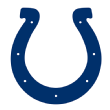 Laiatu Latu, EDGE, Indianapolis Colts (No. 15) There was no debate for me throughout this process that Latu had the best tape of the defensive players in this class, and he was 12th in my rankings. Medical concerns were the only issue that had to be closely examined -- he medically retired with neck issues in 2020 while at Washington before returning and transferring to UCLA -- but Indianapolis clearly had the assurance it needed to make a justifiable investment in him. Latu has a refined pass-rush skill set, and he had 23.5 sacks over the past two seasons.
 Quinyon Mitchell, CB, Philadelphia Eagles (No. 22) Mitchell had a dominant college career at Toledo that included 39 pass breakups over his last two seasons, and he followed it up with stellar showings at the Senior Bowl and combine. He was on the short list of the cleanest prospects in the class, and he filled Philadelphia's biggest need. Darius Slay and James Bradberry are both over 30 years old, and GM Howie Roseman was able to land my CB1 way down at No. 22 without trading up.
 Graham Barton, C, Tampa Bay Buccaneers (No. 26) The Buccaneers' most pressing need entering the draft was fortifying the interior offensive line. Barton began his Duke career at center in 2020 before playing three seasons at left tackle. He'll likely play along the interior in Tampa Bay, but that versatility is huge for this team. He brings elite mobility and run blocking.
 Xavier Legette, WR, Carolina Panthers (No. 32) Legette was the 28th player on my board, as one of the most explosive players in the draft class. Get the football in his hands and good things are bound to happen, thanks to his power and acceleration as a ball carrier. His combine measurables and testing results (6-foot-1, 221 pounds, 4.39-second 40-yard dash and 40-inch vertical jump) jumped out to me because they aligned with the tape. This pick continues a really strong offseason for the Panthers, who have poured countless resources into improving the environment around Bryce Young. I expect a major turnaround for Young this season, and Legette can help.  Round 2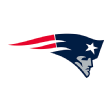 Ja'Lynn Polk, WR, New England Patriots (No. 37) Loyal listeners of our "First Draft" podcast have heard me wax poetic about Polk as the leader of the "my guys" list for this class. Polk finished 43rd on my board, and I love his excellent hands, route running, toughness and body control. He is a substance-over-sizzle player who just always finds a way to move the chains. He averaged 16.9 yards per catch over the past two seasons with Washington, and Drake Maye will look his way often.
 Braden Fiske, DT, Los Angeles Rams (No. 39) The Rams doubled up on Florida State defensive players with their first two picks of the draft (they took edge rusher Jared Verse in Round 1) and will have a vastly improved front seven as a result. Fiske finished his college career with a scorching stretch of six sacks in his last five games, as his first-step quickness and overall explosion proved unblockable. He more than makes up for his modest size (297 pounds) with his burst and ability to get underneath bigger offensive linemen to out-leverage them.
 Cooper DeJean, CB, Philadelphia Eagles (No. 40) I'm enough of a fan of DeJean that if he had gone No. 22 overall to the Eagles, he would have made my list of favorite first-round picks. But at No. 40? Steal. The Eagles' need for speed this offseason has now been met with the additions of Mitchell and DeJean, the latter of whom offers positional versatility to boot. DeJean is a springy, confident man-to-man coverage player with elite ball skills -- he picked off seven passes in college.
 Cole Bishop, S, Buffalo Bills (No. 60) Bishop was my top-ranked safety in the class, showing great speed that allows him to play with range as a deep middle-of-the-field defender. He excels in man coverage and as a blitzer, as well. In short, Bishop is a movable DB who helps fill a significant need for Buffalo; Jordan Poyer left in free agency, and Micah Hyde is presently unsigned.
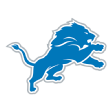 Ennis Rakestraw Jr., CB, Detroit Lions (No. 61) Rakestraw was one of the best value picks relative to my board in the first three rounds of the draft, as my 32nd-ranked player landed at No. 61. Rakestraw is a fearless, tone-setting corner who brings a ton of physicality to the field, is a factor against the run and makes plays at or behind the line of scrimmage. I love how Detroit has remade its cornerback room, signing Carlton Davis III and drafting both Terrion Arnold and Rakestraw in the first two rounds.  Round 3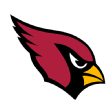 Isaiah Adams, G, Arizona Cardinals (No. 71) I was a huge fan of Adams throughout the process, thanks to his positional versatility, toughness and power. My guess is Adams settles in as a guard, and he could start as a rookie for the Cardinals. My buddy Mel Kiper Jr. handles our draft grades, but Arizona would be at or near the top of my list. The Cards crushed this entire draft.
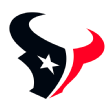 Calen Bullock, S, Houston Texans (No. 78) Bullock's range is his signature trait, and he had nine interceptions in three seasons at USC, including five in 2022. He's a minimal factor against the run relative to other safeties in this class, but if the Texans play to his strengths, he can be a turnover-forcer and an explosive-play limiter.
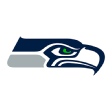 Christian Haynes, G, Seattle Seahawks (No. 81) Few players bring as much tenacity on a snap-in, snap-out basis as Haynes, who ended up No. 59 on my board. Over the past two seasons, he allowed zero sacks and a mere five pressures. Haynes excels in pass protection and addresses arguably Seattle's biggest need of interior line depth, helping replace Damien Lewis and Evan Brown (both left in free agency).
 DeWayne Carter, DT, Buffalo Bills (No. 95) The numbers will never tell the full story on Carter, as he was an absolute menace to block from a variety of alignments during his time at Duke. He can line up over the center, as a 3-technique and even kick out over the tackles. Carter plays full tilt at all times and consistently impacts the integrity of the pocket. Buffalo lacks depth on the interior of the defensive line beyond Ed Oliver and DaQuan Jones, and Carter helps.
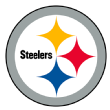 Payton Wilson, LB, Pittsburgh Steelers (No. 98) Wilson landed at No. 98 because of his injury history, but the end of the third round was more than a reasonable time to justify the investment -- this was an incredible value. I thought he was the most impressive inside linebacker on tape, showing off elite speed and versatility. Wilson can pass rush and cover, he has great range defending runs sideline-to-sideline and he's extremely instinctive. Wilson joins free agent signing Patrick Queen in Pittsburgh's attempt to rebuild the linebacker room.  Round 4 Tanor Bortolini, C/G, Indianapolis Colts (No. 117) I had a third-round grade on Bortolini, especially after a really good combine performance that emphasized his ability to redirect -- an essential trait for an interior offensive lineman. Bortolini has versatility, not just in regard to the position he can play (guard or center) but also the scheme. He held his own last season at Wisconsin as the team moved far away from its power-running game that had been a longtime hallmark of the program. Bortolini can help open lanes for running back Jonathan Taylor and buy quarterback Anthony Richardson time in the pocket.
 Malik Mustapha, S, San Francisco 49ers (No. 124) No player in the draft packed more pound-for-pound punch than Mustapha, who fearlessly flies around to deliver big hits at 5-10, 209 pounds. I remember the first game I watched of Mustapha's, thinking in that moment that he at the very least had a chance to become a difference-maker as a core special teamer. That was the floor. The ceiling is much higher, as he can be a defensive impact player for a 49ers team that needed safeties.
 Giovanni Manu, OT, Detroit Lions (No. 126) It wasn't easy to track down film of Manu, as he played for the University of British Columbia and was more of a basketball player growing up, but once in hand, that tape didn't take long to impress. Manu has some of the most impressive measurements in the draft, as he measured in at 6-7 and 352 pounds at a regional pro day in late March. There, he had a 33.5-inch vertical jump and ran just over 5.0 in the 40. He showed devastating strength on tape that I believe will travel at the NFL level.
 Ray Davis, RB, Buffalo Bills (No. 128) Davis felt like a good bet to go in the fourth round given his age (he'll turn 25 this season) and positional value, but I was a huge fan of his throughout the process. He's a chunk play waiting to happen with terrific vision and burst. What he lacks in timed speed (4.52) and size (5-8, 211 pounds), he makes up for with contact balance and toughness. He'll be a good complementary back to James Cook.
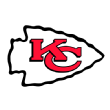 Jaden Hicks, S, Kansas City Chiefs (No. 133) This was a value relative to my board, as Hicks checked in at 67th overall, a borderline second-round grade. Over the past two seasons, he had 700-plus snaps at safety, 200-plus snaps at outside linebacker, 150-plus snaps at inside linebacker and 150-plus snaps at slot cornerback, making him the only player in the Power 5 to do that over that span. Tight end and fellow fourth-rounder Jared Wiley was also a major value in my book. Kansas City's front office is as good as there is in the NFL for many reasons, one of which is consistency in the draft; this year's class profiles to be very good once again.  Round 5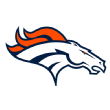 Kris Abrams-Draine, CB, Denver Broncos (No. 145) I love Abrams-Draine's route recognition, which likely stems from his time as a wide receiver at the beginning of his college career (five games back in 2020). His anticipation of route combinations and concepts allows Abrams-Draine to be in the right place at the right time and helps offset his size limitations (5-11, 179 pounds). He broke up 25 passes over the past two seasons.
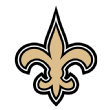 Spencer Rattler, QB, New Orleans Saints (No. 150) There was a historic gap between quarterbacks at one point in the draft, as Rattler went 138 picks after Bo Nix went No. 12 to Denver. But Rattler's combination of arm strength and functional mobility (inside and to a degree outside of the pocket) made him a worthwhile flier for New Orleans. He's not a shoo-in to become a starter any time soon, but given the quarterback attrition we've seen around the NFL, it's imperative to have depth. He should be the No. 2 for New Orleans behind Derek Carr.
 Brennan Jackson, EDGE, Los Angeles Rams (No. 154) Part of what I love about the Rams' process in the draft is that they -- at the risk of sounding like a cliché -- just target really good football players. Jackson is a relentless rusher who has both explosion and length coming off the edge. The Rams needed to invest in their front seven in the draft and added three players who will contribute there as rookies (Jackson, Verse and Fiske). Jackson had 8.5 sacks, 35 pressures and 16 tackles for loss last season.
 Tyrone Tracy Jr., RB, New York Giants (No. 166) Tracy is a fun player to study, as he was a wide receiver for four seasons at Iowa before transferring to Purdue and playing two years as a running back. That versatility could easily lead to early opportunities for the Giants, especially given the team's thin backfield behind new starter Devin Singletary. Tracy ran for eight TDs last season.
 Caelen Carson, CB, Dallas Cowboys (No. 174) The Wake Forest scheme called for Carson to play a good amount of off-man coverage, which shined a light on two areas that I was drawn to in his game: He has a very good trigger to drive back to the ball from his backpedal and the discipline to not bite on double moves. Carson didn't have standout on-ball production, as he was without an interception over the past two seasons, but he's disruptive when the ball is in his area.  Round 6 Malik Washington, WR, Miami Dolphins (No. 184) Washington had a breakout season in 2023, setting the ACC record for catches in a single season with 110 and playing much bigger than his frame (5-9, 191 pounds) would suggest. Given his stature, Washington profiles as a likely slot option for the Dolphins, who will of course lean most heavily on Tyreek Hill and Jaylen Waddle. But Washington's run-after-catch ability and the way he makes contested catches have me very intrigued.
 Mekhi Wingo, DT, Detroit Lions (No. 189) This was one of the best value picks of the third day, as Wingo ranked 81st overall on my board. He impressed me with his ability to play behind the line of scrimmage. His lightning-quick first step and active hands make him tough to block. Wingo probably lasted until No. 189 because of his stature (6-foot and 284 pounds), but it wouldn't surprise me if he's at least a rotational interior pass-rusher early on.
 Tanner McLachlan, TE, Cincinnati Bengals (No. 194) McLachlan was one of my favorite sleepers in the class and my 113th-ranked player. He has excellent size (6-5, 244 pounds) and is an instinctive/smooth route runner with really good skills after the catch. Cincinnati was a rare team that leaned on a legitimate rotation of tight ends in 2023 (four consistently saw play time), and McLachlan figures to be a part of something similar, with Mike Gesicki and fellow draftee Erick All also with the Bengals this season.
 Michael Jerrell, OT, Seattle Seahawks (No. 207) One of the best small-school prospects in the draft, Findlay's Jerrell was a savvy Day 3 upside swing by Seattle. He has a basketball background, and you can see his explosive physical traits on tape -- exactly what you wanted to see from a prospect who played at a lower level. Jerrell consistently overwhelms opposing players.
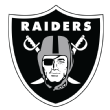 Dylan Laube, RB, Las Vegas Raiders (No. 208) This was one of my favorite picks in all of Day 3, as Laube will soon prove to be a major value. He has excellent versatility as one of the best pass-catching backs in the class -- he caught 68 passes for 699 yards and seven TDs last season -- and a return-game contributor. In New Hampshire's biggest game of last season against Central Michigan, he posted an astounding 12 catches for 295 yards.  Round 7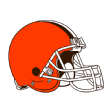 Myles Harden, DB, Cleveland Browns (No. 227) Harden was the 147th player on the board for me, so an 80-spot difference makes this a major value for Cleveland. He had a nose for the football in college, forcing four fumbles and picking off four passes over the past two seasons as a consistent disruptor.
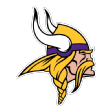 Levi Drake Rodriguez, DT, Minnesota Vikings (No. 232) One of the draft's hidden gems, Rodriguez finished his college career at Texas A&M-Commerce and just destroyed opposing interior offensive lines during his time there. He has great burst that caught the eyes of scouts this past season, and Minnesota landed a potential sleeper here. He had 5.5 sacks and 7.5 tackles for loss in 2023.
 Nathan Thomas, OT, Dallas Cowboys (No. 233) Thomas started 26 games at Louisiana, playing every snap at left tackle. But he has positional flexibility to play at guard -- and that might be his better home at the NFL level. Thomas' standout trait is his power; when he is able to get his hands on a defender, it's over.
 Michael Barrett, LB, Carolina Panthers (No. 240) Barrett played with plenty of physicality at Michigan in a college career that included more games and more wins than any other player in program history. He's smaller in stature at just 5-11 and 233 pounds, but I felt he played above his frame consistently. If any front office knows linebacker play, it should be Carolina, given GM Dan Morgan's standout career at the position. Barrett had 66 tackles, 3 sacks and 3 forced fumbles last season.
 C.J. Hanson, G, Kansas City Chiefs (No. 248) Hanson is a small-school product out of Holy Cross, and he has very fluid movements pulling defensive linemen. My favorite part of Hanson's game is his temperament: He wants to finish every block he executes. At just 300 pounds, he'll work to add weight as he develops behind arguably the best interior offensive line in the league.  BONUS: Favorite undrafted free agent signing Beau Brade, S, Baltimore Ravens Brade going undrafted caught me off guard. His tape was great, displaying his ability to make plays in the box and handle man coverage reps. When Maryland played Ohio State, Brade was used against Marvin Harrison Jr., and a defensive coordinator having the trust to use a safety in that capacity speaks volumes. Nice add for Baltimore after the draft wrapped up.
|
